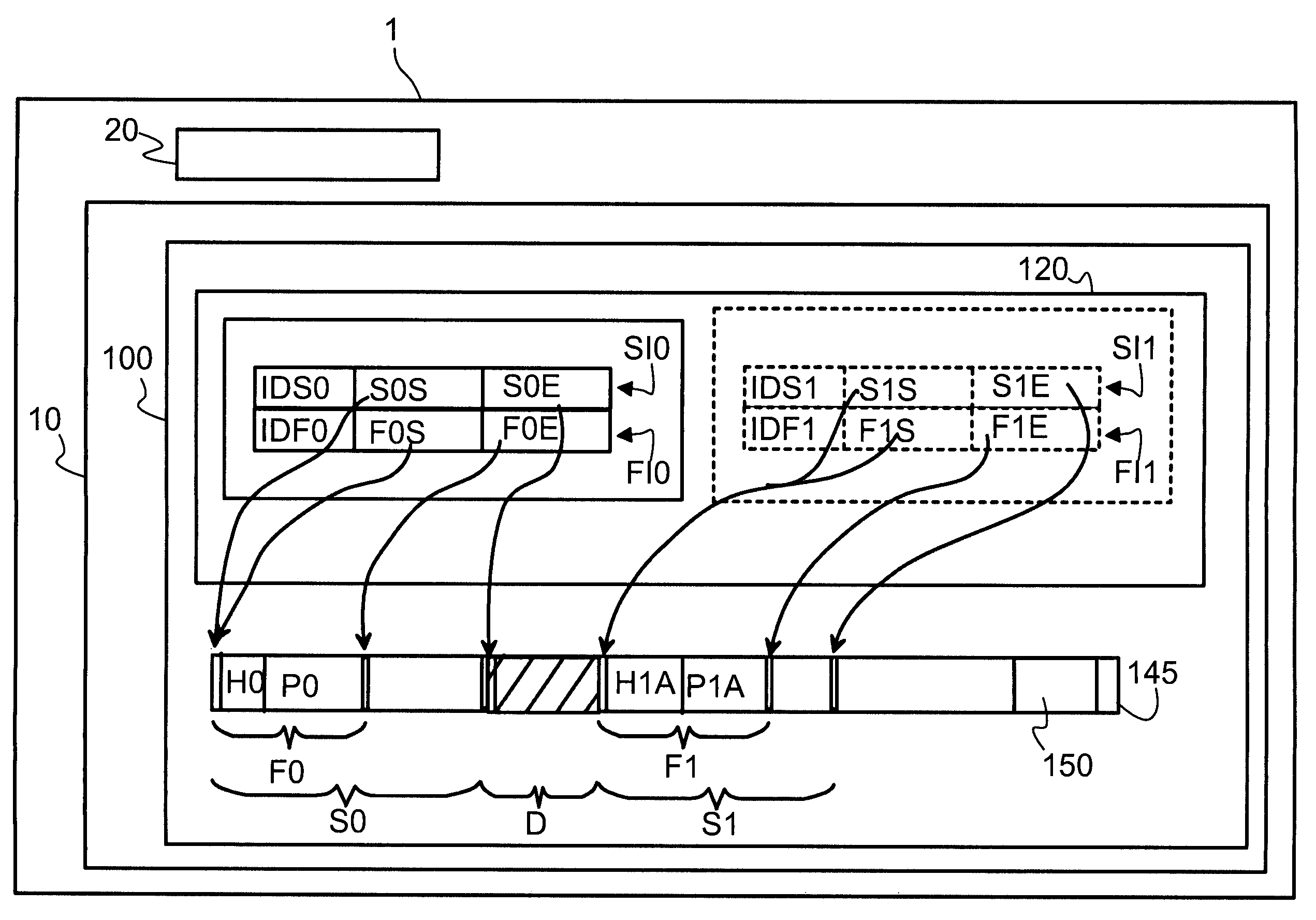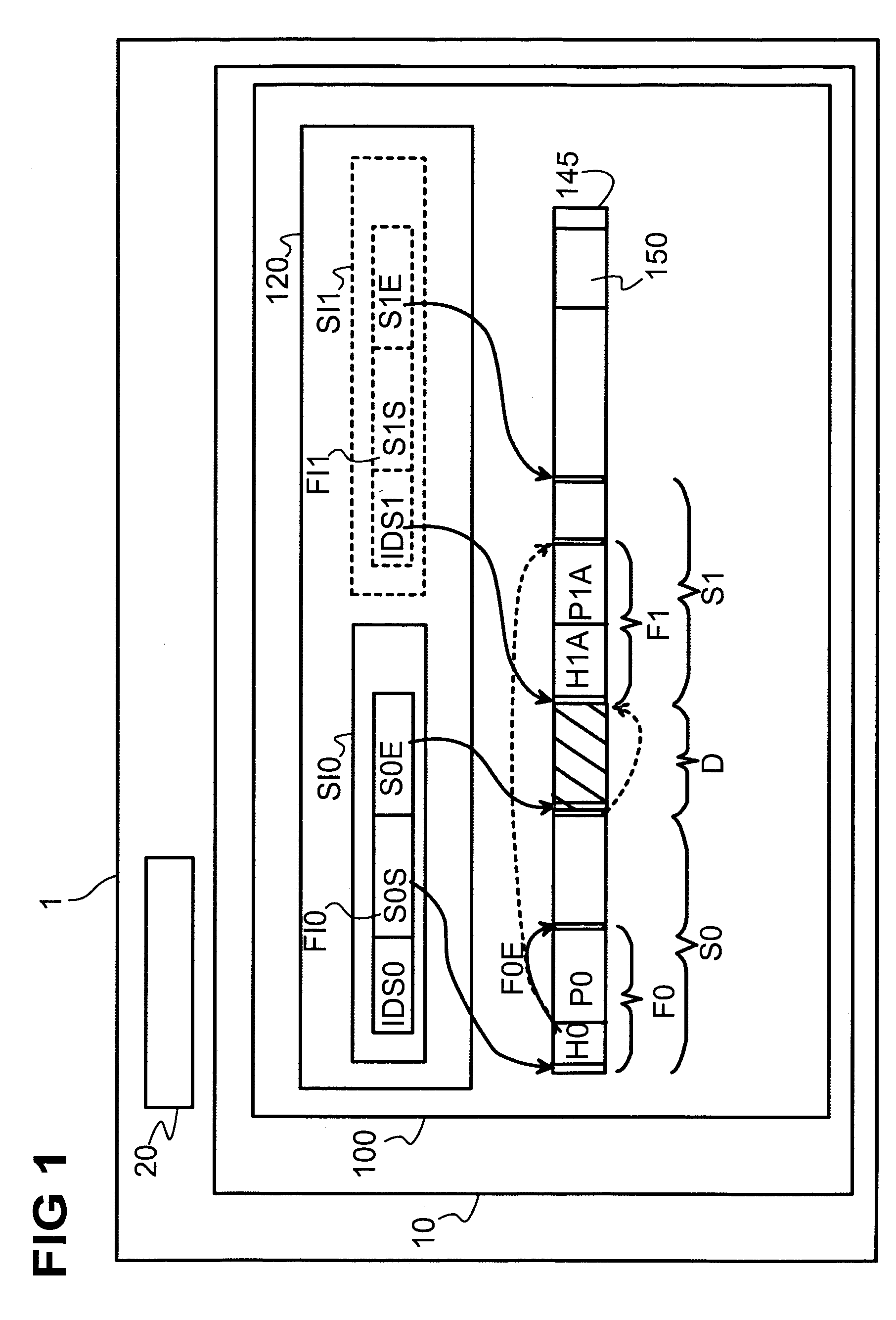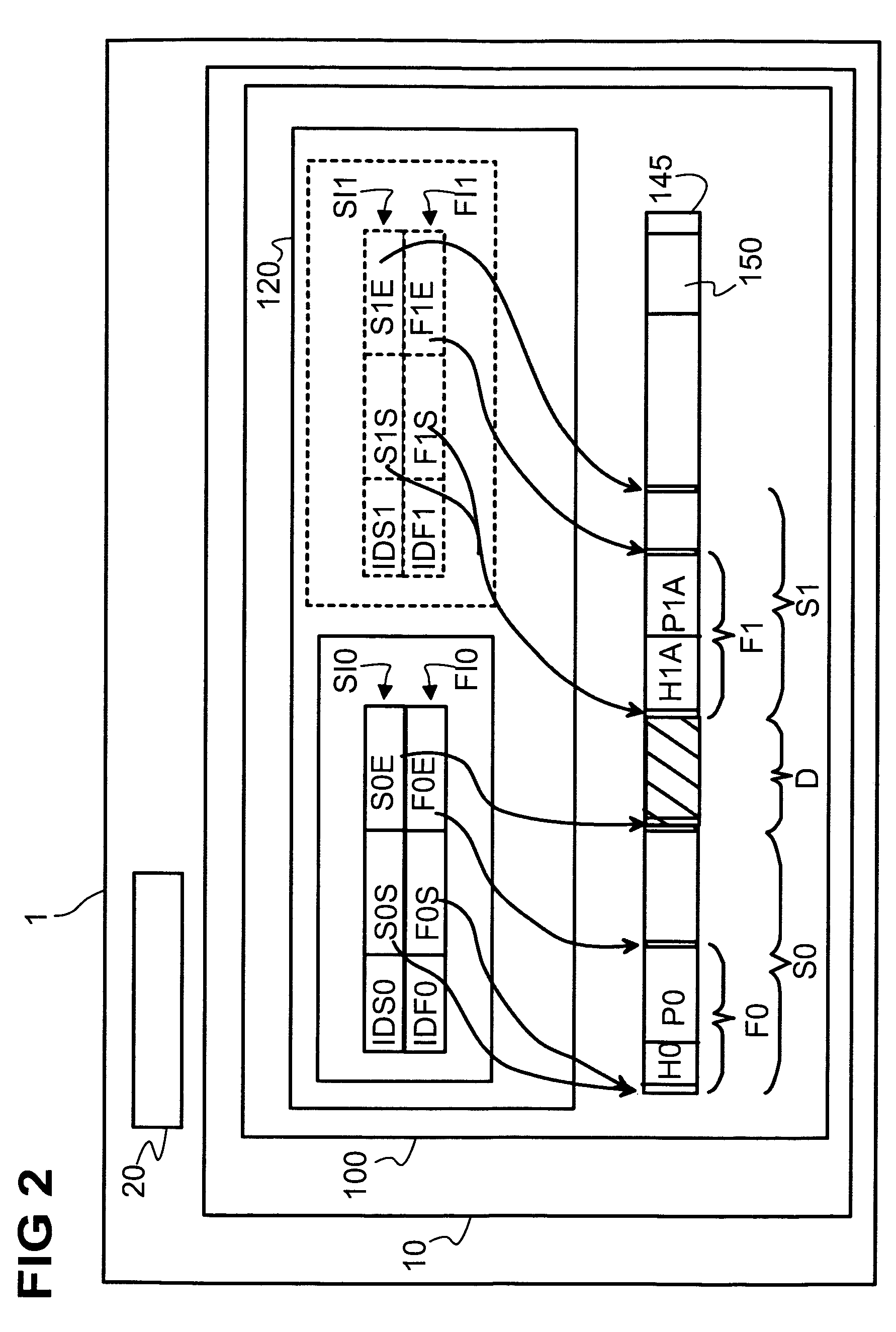Method of storing and organizing files on a storage medium via a file system
a file system and storage medium technology, applied in the field of file systems, can solve the problems of reducing the maintenance reducing the performance of the file system, and fragmentation of files, so as to ensure the fragmentation of files is not large, the file is not easily fragmented, and the file is accessible more quickly.
- Summary
- Abstract
- Description
- Claims
- Application Information
AI Technical Summary
Benefits of technology
Problems solved by technology
Method used
Image
Examples
Embodiment Construction
[0021]FIG. 1 shows a hardware system 1, for example a computer, comprising a storage medium 10, a processing unit 20. The storage medium 10 comprises a file system 100. The file system 100 comprises a file allocation data base 120 and an addressable memory 145 for storing other data, for example program files and data files.
[0022]In order to perform an embodiment of the claimed method, a non-fragmented segment S0 on the storage medium is reserved for taking up a file F0. The segment S0 is reserved by storing an identification SI0 of the address range of the segment S0 within the file allocation data base 120. The identification SI0 comprises an identification code IDS0 of the segment S0, an address S0S indicating the start address of the segment and an address S0E indicating the end address of the segment. The identification SI0 serves to identify the segment S0 and to distinguish the segment S0 from other segments that are managed within the file allocation data base 120. The size ...
PUM
 Login to view more
Login to view more Abstract
Description
Claims
Application Information
 Login to view more
Login to view more - R&D Engineer
- R&D Manager
- IP Professional
- Industry Leading Data Capabilities
- Powerful AI technology
- Patent DNA Extraction
Browse by: Latest US Patents, China's latest patents, Technical Efficacy Thesaurus, Application Domain, Technology Topic.
© 2024 PatSnap. All rights reserved.Legal|Privacy policy|Modern Slavery Act Transparency Statement|Sitemap



